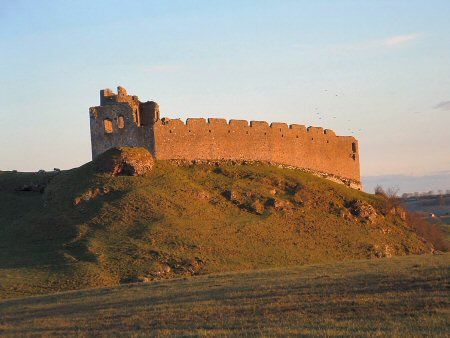We have many fine examples of ancient castle ruins in our area (Bagenal’s certainly NOT being one of them!) and the one I write of now is about five miles southwest of the border at Forkhill. It is
First, the details. It is Monument Number LH29:001 and is found at Grid Reference H991 118. Take the
Take careful note of the dates I am about to tell you. Lady Rohesia de Verdun is said to have built this Castle in 1236. Yes! This is more than a quarter of a millennium BEFORE
Clearly the name de
Archaeologist Tom McNeill refers in his writing to the close similarity with

On the east side of the castle a wide, shallow ditch has been cut through the rock with access by a causeway. A gap in the causeway is now filled in but a drawbridge was once located there, possibly protected by a barbican. This provides access through the gatehouse between two protecting semicircular towers. The curtain wall encloses an area roughly triangular in shape and inside is a hall at the south side and the remnants of a former freestanding structure just west of centre. Steep cliffs defend the castle and there is only one tower in the curtain wall. Much of the latter has well-preserved crenellations, with drainage holes in the wall-walk below.
The great hall, now two stories high, may once have been higher. The three large windows on the first floor all have window seats. A doorway in the west end of the north wall gave access to the hall and at some stage, a small rectangular annexe was added – only the western part of this building now survives.
Although the semicircular exteriors of the gatehouse towers survive, the interior parts have been destroyed. Each tower originally had four stories with a barrel vault over the ground floor and a gate between the two towers.
Tradition says that when the castle was completed Rohesia de Verdun had the architect thrown from one of the tower windows to preserve the secret of the castle’s design. That window is now known as the ‘murder window’.
It is unclear when Castle Roche was last occupied, though tradition has it that Oliver Cromwell laid it waste in his campaign in the seventeenth century to subdue the Irish. For a long time it marked the northernmost boundary of the English sphere of influence in
.. The Pale and Newry …
